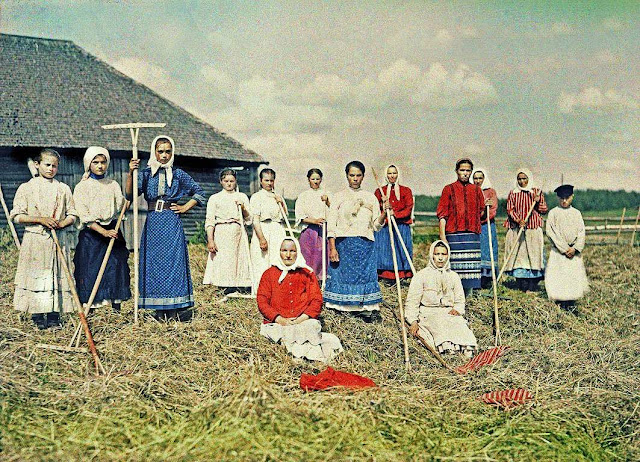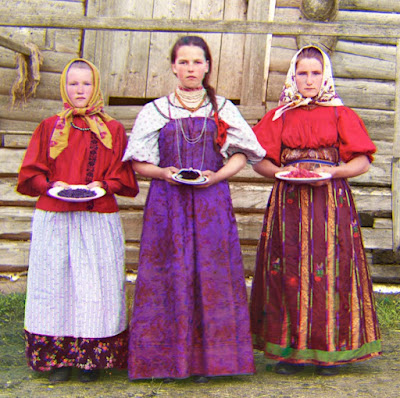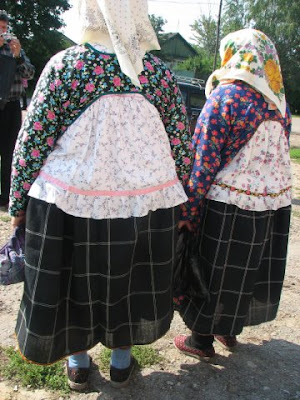Peasant women collecting hay. Color photo by Sergey Prokudin-Gorsky. Beginning of the 20th century.
About the Section
This section aims to present the heritage of traditional Russian pesant life. For the most part of its history, Russia was an agricultural country: until the middle of the 20th century, peasants composed the majority of its residents and every contemporary Russian has peasant grandparents in his or her family tree. Struggling against unfavorable conditions – the natural, and the social -- they nurtured enormous areas and created their own culture whose main traits have existed for centuries. One of them is -- and especially today must be highlighted – that this culture was essentially peaceful: a peasant never needs war, which brings nothing except loss.
Peasant women favored intense colors in their clothing. They looked like flowers against the quiet background of the northern latitudes (the inspiration for this section). Color photo by Sergey Prokudin-Gorsky. Beginning of the 20th century.
In the first half of the 20th century, this culture was finally destroyed by the social and political cataclysm of the era and, most importantly, by the march of industrialized civilization. However, researchers have successfully documented much of it, and enthusiasts travel to distant villages where they can find remnants of it.
Women come for church service at the celebration of the Transfiguration, wearing traditional clothing with ponyova. Ryazan Oblast, August 2006./Vk.com
This preserved heritage shows us the culture whose face is unknown to the modern world and is completely unlike the usual cliches that people in the world associate with Russia. It shows that despite their difficulties, Russian peasants always had ideals of beauty. These ideals take different forms – in special holiday garb for women, saved in the family and passed down for generations, and in songs that accompanied both the everyday and special occasions.
«With women's songs a Russian is diapered, married, and buried» – this saying of Nikolai Gogol best illustrates the role that songs had in the peasant life. Many Russian composers, from Mikhail Glinka to Igor Stravinsky, included melodies from popular folks songs en their works. This, «Kak po sadiku» («As in the garden»), was used by Igor Stravinsky in the ballet «The Firebird».
Project Admiru International aims to present this heritage to more people. Until now the world has known only the beauty of the most outstanding Russian creators – writers, composers, and architects. Now may it also know the beauty created by ordinary people.
• Tags from this Section



